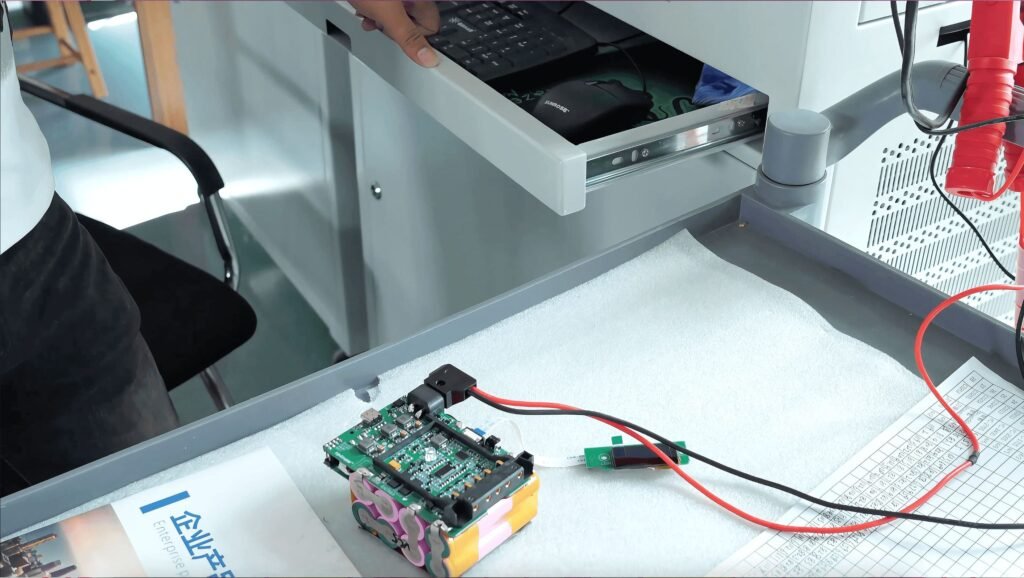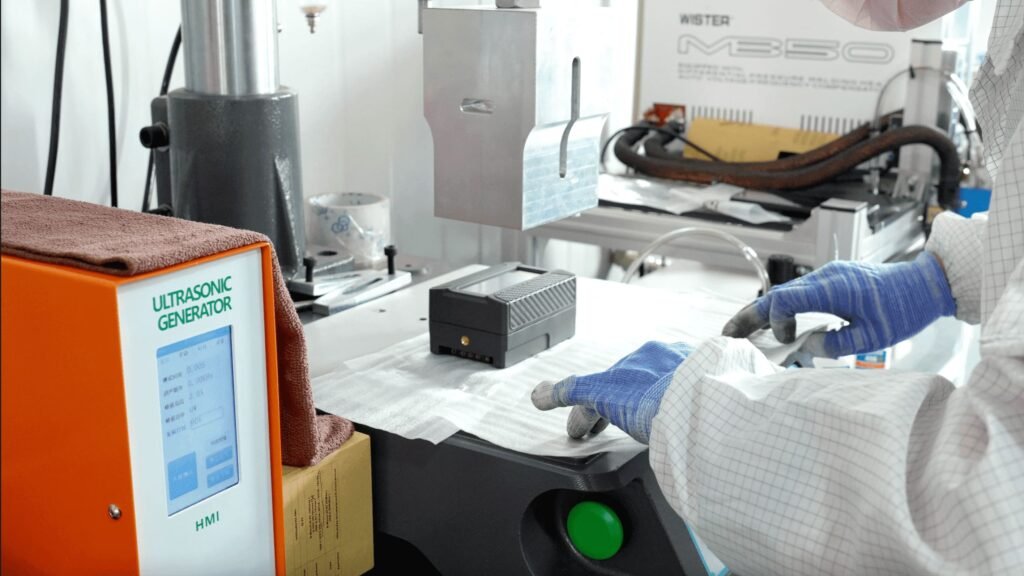After completing the connection between the battery cells and the Battery Management System (BMS), a V-port battery is preliminarily assembled. However, for its long-term safe usage, we need to undergo the following important battery performance testing steps.
Step 5: PACK Comprehensive Testing Equipment

This step is primarily used to test the performance of the PACK, which refers to the battery pack. The battery pack testing equipment utilizes various sensors and electronic components to monitor various parameters of the battery pack, including current, voltage, temperature, capacity, etc. It can continuously record this data in real-time and analyze it to assess the state of the battery pack. For example, if any individual battery cell exhibits abnormal behavior, the battery pack testing equipment can immediately issue an alert to avoid potential safety issues. Additionally, the battery pack testing equipment can perform charge and discharge tests to evaluate the performance and lifespan of the battery pack. This helps manufacturers and operators to identify issues early and take measures to ensure the reliability of the battery pack.
Step 6: Aging Test

Generally, we undergo multiple charge and discharge cycles during the aging test. The significance of battery aging testing lies in detecting performance changes and estimating the lifespan of the battery, thereby predicting potential issues that may arise during battery usage and providing data support for product development. For developing new products and improving existing product designs, battery aging testing is a crucial step. Additionally, for enterprises that rely on batteries, battery aging testing is indispensable. Only through battery aging testing can enterprises ensure product quality, avoid quality issues, protect user interests, and prevent accidents caused by battery problems, thus maintaining the company’s brand image.
Step 6: Voltage Delta Test

Voltage delta testing for batteries typically refers to the assessment of voltage differences among various positions within the battery during operation. These differences may arise due to internal chemical reactions, aging, wear, temperature variations, or uneven loads.
Step 7: Final Assembly

For the final assembly, we will utilize an ultrasonic plastic welding machine. This machine is a high-tech device used for welding thermoplastic products. It employs high-frequency vibration to melt the contact surfaces of two plastics and form strong molecular chains. The advantages include ease of operation, fast welding speed, high welding strength, and high production efficiency.


